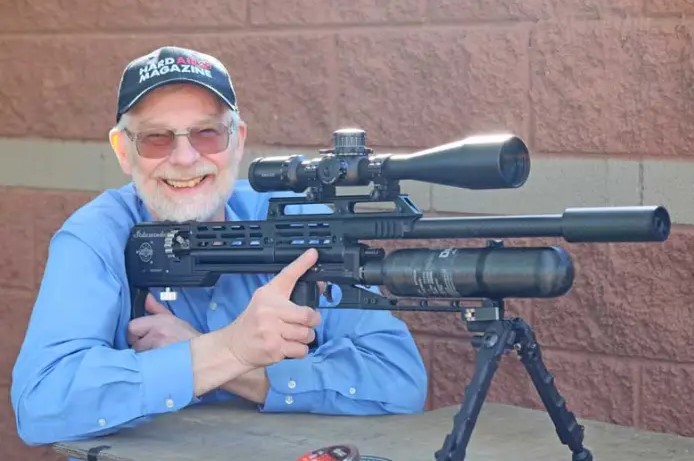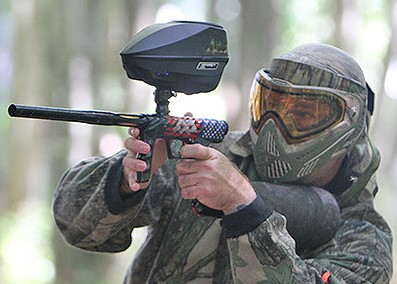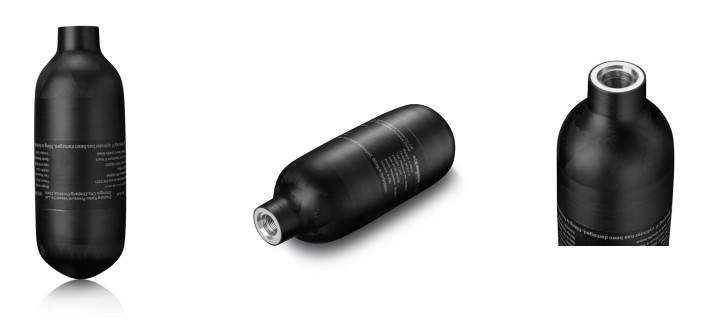When selecting a carbon fiber tank for an air rifle, several factors must be considered to ensure the best balance of performance, weight, and usability. These include volume, dimensions, function, weight, and aesthetics. This guide provides a structured approach to choosing the best carbon fiber tank for your air rifle.
1. Understanding Volume: 0.2L to 1L
The volume of the tank determines how many shots you can take before needing a refill. The most common sizes range from 0.2L to 1L, each serving different needs:
- 0.2L – 0.3L: Suitable for lightweight, compact setups where portability is a priority. These tanks are ideal for field use with limited shot capacity.
- 0.4L – 0.5L: A balanced option, providing a moderate number of shots while remaining relatively compact.
- 0.6L – 1L: Best for high-power air rifles or extended shooting sessions without frequent refills. The trade-off is added weight and bulk.
2. Dimension Considerations
The dimensions of the tank should match the design of your rifle and shooting style. Key aspects include:
- Length: Longer tanks may provide more air capacity but could interfere with handling and balance.
- Diameter: Ensure the tank fits within the rifle’s mounting area without obstructing other components.
- Thread Compatibility: Standard thread types must match the rifle’s connection system to avoid leakage or incompatibility.
3. Functionality and Performance
A carbon fiber tank should support the rifle’s operating pressure and maintain air supply efficiently.
- Pressure Rating: Tanks typically operate at 3000-4500 PSI. Higher pressure means more stored air but requires a capable filling system.
- Regulated vs. Unregulated Tanks:
- Regulated tanks provide a consistent pressure output, enhancing shot accuracy.
- Unregulated tanks are simpler but may experience pressure fluctuations.
- Refillability: Ensure the tank is easily refillable at air stations or with a personal compressor.
4. Weight Considerations
The weight of the tank affects mobility and handling.
- Lightweight (0.2L – 0.5L tanks): Easier to carry and mount on the rifle, suitable for mobile shooting.
- Heavier (0.6L – 1L tanks): Provides more air capacity but may impact rifle balance and maneuverability.
- Material Influence: Carbon fiber tanks are significantly lighter than metal alternatives while maintaining durability.
5. Aesthetic and Design Factors
A tank should not only perform well but also complement the rifle’s appearance and ergonomics.
- Finish and Coating: Some tanks have a sleek, matte, or glossy finish, enhancing the overall look.
- Shape and Ergonomics: Some tanks are contoured for a better grip or to fit seamlessly with specific rifle models.
- Color Options: While mostly functional, some shooters prefer custom designs or branding for a personalized touch.
6. Additional Considerations
- Durability: Ensure the tank is built to withstand wear and tear, especially for outdoor use.
- Safety Features: Overpressure release valves and reinforced necks enhance safety.
- Budget: Higher-capacity and regulated tanks tend to cost more, so balance needs with affordability.
Final Thoughts
Choosing the right carbon fiber tank for an air rifle involves balancing volume, dimensions, function, weight, and aesthetics. Whether you need a compact 0.2L tank for light shooting or a robust 1L tank for extended use, considering these factors will help you select the best option for your needs. Always prioritize compatibility, safety, and performance to enhance your shooting experience.
Post time: Feb-18-2025



